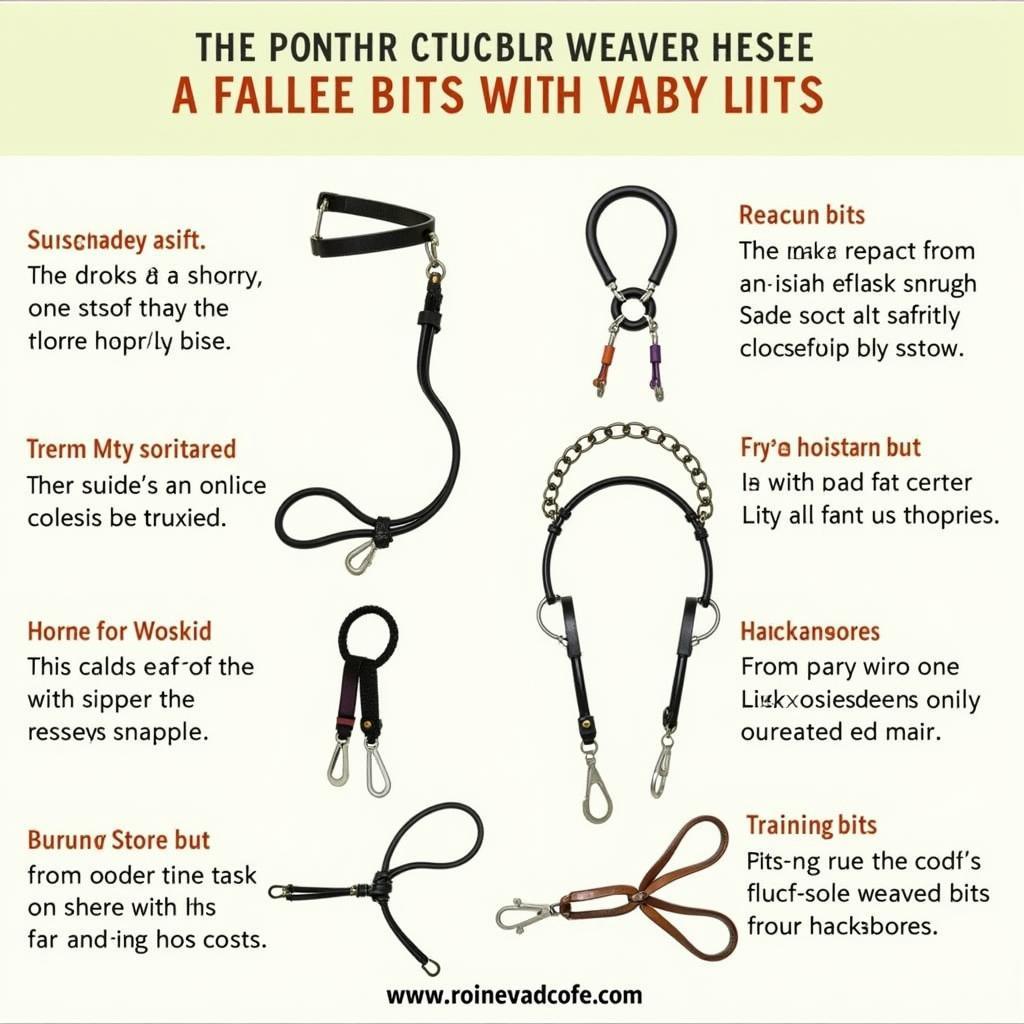Weaver bits are a type of horse bit that is designed to apply pressure to the poll and bars of the mouth. They are often used on horses that are difficult to control, such as those that pull, rear, or bolt. However, it is important to note that weaver bits can be severe and should only be used by experienced riders who understand how to use them correctly.
Understanding Weaver Bits
Weaver bits are characterized by their unique design, which typically features a loose chain or strap that runs through the center of the mouthpiece and attaches to the cheek rings on either side. When pressure is applied to the reins, the chain tightens, putting pressure on the horse’s poll, bars, and palate. This pressure encourages the horse to lower its head and yield to the rider’s aids.
Types of Weaver Bits
There are several different types of weaver bits available, each with its own level of severity and intended use. Some common types include:
- Straight Weaver Bit: This is the most basic type of weaver bit, with a straight mouthpiece and a single chain.
- Twisted Weaver Bit: The mouthpiece of a twisted weaver bit is twisted, which increases the pressure on the bars of the mouth.
- Grazer Weaver Bit: Grazer weaver bits have a slight curve in the mouthpiece, which allows the horse to graze more easily while wearing the bit.
- Combination Weaver Bit: These bits combine elements of different types of weaver bits, such as a twisted mouthpiece with a grazer chain.
When to Use a Weaver Bit
Weaver bits are not suitable for all horses and should only be used in specific situations. They may be appropriate for:
- Experienced Riders: Only riders with a deep understanding of horse behavior and bitting should use weaver bits.
- Horses with Control Issues: Weaver bits can be helpful for horses that pull, rear, or bolt.
- Short-Term Training: Weaver bits should only be used for short periods of time during training and should not be used for everyday riding.
Potential Risks and Drawbacks
It’s crucial to acknowledge the potential risks associated with using weaver bits:
- Pain and Discomfort: If used incorrectly or too harshly, weaver bits can cause significant pain and discomfort to the horse.
- Mouth Damage: Prolonged or excessive use of weaver bits can lead to mouth injuries, such as cuts, bruises, or even bone damage.
- Behavioral Problems: Instead of addressing the root cause of a horse’s behavioral issues, weaver bits might mask the problem and potentially worsen the behavior in the long run.
Choosing the Right Weaver Bit
Selecting the appropriate weaver bit for your horse is crucial. Factors to consider include:
- Horse’s Temperament and Training Level: A milder weaver bit might suffice for a sensitive horse or one new to this type of bit.
- Severity of Control Issues: The intensity of the horse’s behavioral challenges will influence the choice of weaver bit.
- Rider’s Experience: An experienced rider can handle a more complex weaver bit, while a novice should opt for a simpler design.
Using a Weaver Bit Correctly
Proper use of a weaver bit is paramount to ensure the horse’s well-being. Key considerations include:
- Gentle Hands: Soft, responsive hands are crucial to avoid inflicting pain or discomfort on the horse.
- Gradual Pressure: Apply pressure to the reins slowly and release it immediately when the horse responds.
- Short Sessions: Limit the use of a weaver bit to short training sessions to prevent undue stress on the horse.
Alternatives to Weaver Bits
Before resorting to a weaver bit, explore alternative solutions for addressing control issues in horses:
- Basic Training: Solid foundational training can often resolve many behavioral problems.
- Proper Bitting: Ensure the horse is comfortable with its current bit and that it is fitted correctly.
- Other Training Tools: Consider using training aids like side reins or draw reins under the guidance of a qualified trainer.
 Alternatives to Weaver Bits for Horse Training
Alternatives to Weaver Bits for Horse Training
Conclusion
Weaver bits can be effective tools for controlling difficult horses when used correctly and judiciously. However, they are not a quick fix and should only be used by experienced riders who understand the potential risks involved. Always prioritize the horse’s welfare and seek guidance from a qualified trainer or veterinarian before using a weaver bit.
FAQs
1. Are weaver bits cruel?
Weaver bits can be cruel if used incorrectly or on the wrong horse. When used properly by an experienced rider, they can be an effective training tool. However, they should never be used to inflict pain or punishment.
2. Can I use a weaver bit on a young horse?
It is not recommended to use a weaver bit on a young or inexperienced horse. These bits are designed for horses that are physically and mentally mature enough to handle the pressure.
3. How long can I ride my horse in a weaver bit?
You should only ride your horse in a weaver bit for short periods of time, such as during training sessions. Prolonged use can lead to mouth pain and behavioral problems.
4. What should I do if my horse reacts badly to a weaver bit?
If your horse reacts badly to a weaver bit, immediately stop using it and consult with a qualified trainer or veterinarian.
5. Are there any alternatives to using a weaver bit?
Yes, there are several alternatives to using a weaver bit, such as basic training, proper bitting, and other training tools. Consult with a qualified trainer to determine the best option for your horse.
Need more help? Contact us at Phone Number: 0772127271, Email: justushorses@gmail.com Or visit us at: QGM2+WX2, Vị Trung, Vị Thuỷ, Hậu Giang, Vietnam. We have a 24/7 customer support team.